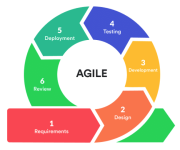Why Complex Projects Need More Than Just Smart Engineers
Getting really good at solving technical problems is just the first step in building complex systems. You can have a team full of brilliant engineers who know everything about coding, electronics, and mathematics, but if they don’t have the right methods for working together on big projects, things can still go completely wrong. The difference between building a simple app and creating something massive with millions of users isn’t just about technical difficulty – it’s about having systems that help smart people collaborate effectively.
Think about building a smartphone. Sure, you need engineers who understand processors, software, batteries, and antennas. But you also need people who can figure out how all these pieces fit together, how they affect each other, and how changes in one area might break something else completely. Without the right approach to managing all these connections, even the smartest team will struggle to create something that actually works well.
Where Individual Skills Hit Their Limits
Every engineer starts by getting really good at their specific area. Software developers learn programming languages and algorithms. Hardware engineers master circuit design and component selection. But when projects get big enough, knowing your own piece isn’t enough anymore. You need to understand how your work connects to everyone else’s work.
The problems start when engineers try to apply their individual problem-solving methods to team situations. What works great for debugging code or optimizing a circuit design doesn’t work when you’re coordinating with five other engineers who all have different priorities and constraints. Individual technical skills are still important, but they need to be supported by approaches that help the whole team stay aligned.
This is where structured methodologies become essential. Teams working on complex systems often benefit from sysml training to develop shared approaches for modeling and communicating system designs across different engineering disciplines. These frameworks provide common languages that help specialists from different areas understand each other’s work and constraints.
The transition from individual contributor to system-level thinking is tough for a lot of engineers. It requires stepping back from the technical details you love and focusing more on how everything fits together. Some engineers struggle with this shift because it feels less technical and more abstract, but it’s actually just as challenging and important as the detailed technical work.
Communication Problems That Kill Projects
Smart engineers often assume that other smart engineers will understand their work without much explanation. This assumption causes huge problems on complex projects where different specialties need to work closely together. The electrical engineer designs power systems based on certain assumptions, while the software engineer writes code based on completely different assumptions, and nobody realizes the conflict until it’s too late to fix easily.
Technical documentation becomes critical, but not the kind of documentation that just lists specifications. Complex projects need documentation that shows relationships, dependencies, and trade-offs. Engineers need to communicate not just what they’re building, but why they made specific design choices and how those choices affect other parts of the system.
The language barrier between engineering disciplines is real and expensive. Software engineers discuss performance and scalability using terms that hardware engineers might interpret differently. Without shared frameworks for discussing system-level concerns, teams waste enormous amounts of time in meetings trying to figure out what everyone actually means.
Why Ad Hoc Methods Break Down
Small projects can often succeed with informal coordination methods. Engineers talk to each other when needed, make decisions on the fly, and adjust course based on whatever problems come up. This works fine when you have three people building something straightforward, but it falls apart completely when you have thirty people building something complex.
Ad hoc methods create invisible dependencies that nobody tracks properly. Engineer A makes a design decision that affects Engineer B’s work, but Engineer B doesn’t find out until weeks later when integration testing reveals the problem. By then, both engineers have built substantial amounts of work on top of their original assumptions, making fixes expensive and time-consuming.
The documentation problems get worse as projects grow. When teams don’t have systematic ways of capturing design decisions and their reasoning, knowledge exists only in people’s heads. When those people leave the project or forget details from months ago, the team loses critical information about why the system works the way it does.
The Architecture Gap
Most engineering education focuses on building components, not on designing systems. Engineers learn to make things work, but they don’t necessarily learn how to make things work together reliably over time. This creates a gap between technical implementation skills and architectural thinking skills.
System architecture isn’t just about drawing boxes and arrows showing how components connect. Good architecture requires understanding trade-offs between different design approaches, predicting how the system will behave under stress, and creating flexibility for future changes and improvements. These skills build on technical knowledge but require additional systematic approaches to system-level thinking.
The architects who do this work well usually developed these skills through years of experience making mistakes and learning from them. But projects can’t afford to wait for every engineer to learn system architecture through trial and error. Teams need systematic ways to develop these capabilities more quickly and reliably.
Building Systems That Scale
Complex systems need to handle growth, changes, and unexpected problems gracefully. This requires designing flexibility and robustness into the system from the beginning, not just optimizing for current requirements. Engineers working on system components need to understand how their pieces fit into these larger reliability and scalability goals.
The testing and validation methods that work for individual components don’t scale up to system-level testing. System testing requires coordinated approaches that verify not just that each piece works correctly, but that all the pieces work correctly together under various conditions. This kind of testing needs to be planned and designed systematically, not just added on at the end.
Integration becomes the biggest challenge as systems grow. Each component might work perfectly in isolation, but putting them together reveals interface problems, performance bottlenecks, and unexpected interactions. Teams need systematic approaches for managing integration complexity, not just hoping that smart engineers can figure it out when problems arise.
The Value of Systematic Approaches
Systematic engineering methods don’t replace technical skills – they multiply the effectiveness of those skills by helping smart people work together more efficiently. Good methods provide common vocabularies, standard ways of documenting decisions, and proven approaches for handling common system-level challenges.
The best engineering teams combine deep technical expertise with systematic approaches to complex system development. They use their technical skills to solve implementation problems and their systematic methods to coordinate their work, manage complexity, and ensure that all the pieces fit together correctly.
These methods also help teams avoid repeating mistakes that other projects have already made and solved. Instead of learning everything through expensive trial and error, teams can build on proven approaches and focus their creative energy on the unique challenges of their specific project.
Moving Beyond Individual Excellence
Complex engineering projects succeed when smart engineers have the right tools and methods for collaborative system development. Technical brilliance is still essential, but it needs to be supported by systematic approaches that help teams coordinate their work, communicate effectively, and build systems that are greater than the sum of their parts.
The most successful engineers learn to think beyond their individual specialties and develop the system-level perspective needed for complex project success. This doesn’t mean becoming less technical – it means applying technical thinking to the broader challenges of making complex systems work reliably and efficiently.
Smart engineers working with good systematic methods can tackle challenges that would be impossible for even the most brilliant individuals working alone. The combination of technical expertise and systematic approaches is what makes the difference between projects that struggle despite having great people and projects that succeed because they have great people working together effectively.
























